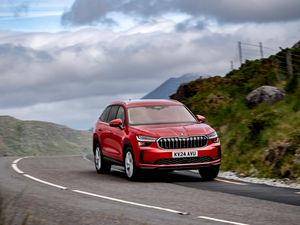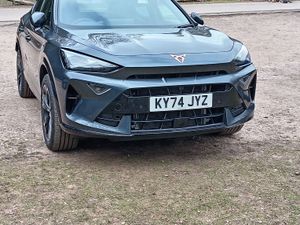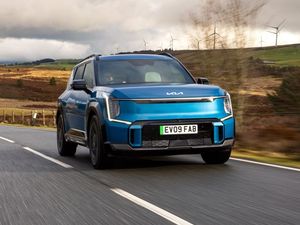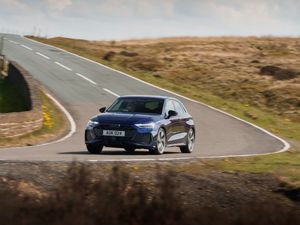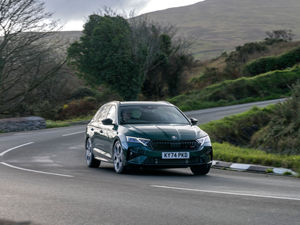First Ride: Honda’s CB750 Hornet brings lightweight and accessible performance
The Hornet name is back – but can this new version live up to the original? Jack Evans finds out.
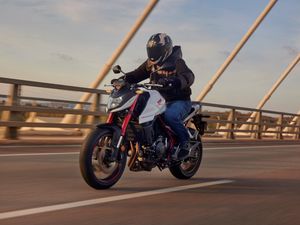
What is it?

>
The naked sports bike segment is awash with options. You’ve got offerings from the likes of Yamaha and Triumph – to name but two – so establishing a foothold in it is never easy. But Honda is never one to back out from a challenge, which results in this – the Hornet.
Reviving a name that shot to prominence in the mid-1990s, it’s a bike that aims to do a whole lot for a price that’ll attract a whole lot of riders. But does it feel cut-price when you’re out on the road? We’ve been finding out.
What’s new?

>
The Honda Hornet aims to be lightweight, accessible and – more than anything – fun to ride. In fact, it weighs in at just 190kg with fuel, so you can definitely say that it’s got the weight-saving box well and truly ticked. Accessibility-wise, it’s not a large bike nor a tall one, so newer, less experienced riders will find the bike not too intimidating. Taller users may find the riding position a touch cramped, however.
Prices for the Hornet start from £6,999, too, which makes it definitely at the more budget-friendly end of the new motorcycle market. Honda hasn’t scrimped on features, mind you, but we’ll be looking at this in more detail shortly.
What’s it powered by?

>
Powering the Hornet is a 755cc liquid-cooled parallel twin developing 91bhp and 75Nm of torque. That might not sound like much when you compare it to the superbike scene, but it’s more than enough to keep this lightweight naked model skipping along at a very sprightly pace.
It’s been designed to deliver plenty of mid-range shove, with that roll-on acceleration there whenever you need it. Up front, we’ve got Showa 41mm SFF-BP upside-down forks, with a Showa shock in the middle, too. Plus, there are dual-piston radial-mount brake calipers at both ends to provide predictable yet punchy stopping power. Honda also claims that you should be able to get up to 65mpg, equating to a full-tank range of around 220 miles.
What’s it like to ride?

>
The Hornet is a remarkably easy bike to get used to initially. With a low seat height, intuitive controls and a relatively small tank, it doesn’t feel too intimidating. On start-up, you get a nice little rasp from the exhaust and that continues as you power away. As you’d expect from such a featherweight bike, it feels particularly nimble to pilot and makes easy work of town and inner-city traffic.
We did, however, find the throttle at low speeds a little bit snatchy and this could prove a bit irritating when you’re trying to maintain pace within, say, a 30mph limit. Once you’re up to speed it’s just fine, but it’s those lower paces where it feels a bit tricky to manage. In terms of outright comfort, the Hornet is more than squishy enough for an hour or so, but the relatively sporty riding position meant our knees were aching after a straight two-hour stint in the saddle.
How does it look?

>
Honda has dialled into the look of the original with this latest Hornet while throwing in some modern touches to create what is, in our eyes at least, a very attractive-looking motorcycle. You’ve got four colours to choose from – black, grey, white and yellow – with that final colour being the best for those riders who like to make a statement. It would, however, be quite nice to see a few more ‘lively’ colour options available.
You can have the frame in red or black, too, while all versions get black wheels which do contrast the ‘main’ part of the bike nicely. There is the option to add some jazzy red wheel stripes, too, which at £40 seems pretty good value to add some colour in.
What’s the spec like?

>
All versions of the Hornet get different rider modes which can be selected via the TFT screen. Sport, as you’d imagine, brings the most dynamic setting while Standard is for everyday riding. Rain mode backs off the engine’s power and the engine braking, while User allows you to switch between all the configurable settings to your liking. The five-inch screen itself is very crisp and easy to read, while to control it you use a simple setup on the left handlebar.
There are some options you could add in, too. Our test bike came with a £240 quickshifter which really speeds up those gearchanges and feels like a very worthwhile addition. Other notable extras include a rear pannier set for £620 and heated grips for £255.
Verdict
Honda had a lot to live up to when it chose to revive the Hornet name, but it feels like it has definitely succeeded. This is a bike that is easy to ride and easy to enjoy, too, but it does all that at a very competitive price. There’s plenty of equipment, too.
Though the snatchy throttle might be a pain if you’re frequently riding in town, for riders who enjoy the call of the open road then the Hornet has a whole lot to offer.

